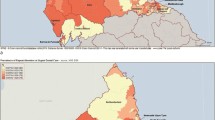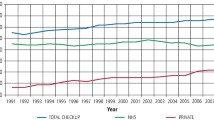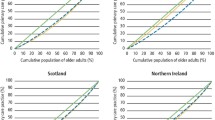Abstract
Background Patients often do not attend planned routine dental appointments. This leads to unmet dental needs, under-utilisation of dental services, lost revenue for dental practice owners and lost educational opportunities when this occurs in centres of training. The aim of this project was to use electronic dental health records to investigate the factors associated with failing to attend dental appointments in an NHS primary dental care service provided free at the point of delivery.
Method Electronic patient data over a one-year period were extracted. Data included: patients' age, sex, deprivation status and whether they missed at least one appointment. Deprivation status was derived from patients' postcodes converted to the indices of multiple deprivation quintiles (IMD). Data were analysed descriptively and analytically. Chi square tests were used to identify statistically significant associations (p <0.05) between patient characteristics and a record of a missed dental appointment. Logistic regression was used to model the patient-related factors which predict failure to attend scheduled appointments while controlling for confounding factors.
Results A total of 3,678 patients aged between 2 and 98 years had at least one appointment offered within the 12-month period studied. Of these, 627 (17%) had at least one instance of 'Did Not Attend' ('DNA') on record. The age group with the highest proportion of patients with a 'DNA' were the 6-12 year olds (23.6%), and the lowest proportion were the >75 years olds (10.4%). A higher proportion of patients had a 'DNA' in the two most deprived quintiles (IMD Quintile 1-32.4% and IMD Quintile 2-33.3%), when compared with the least deprived quintile (IMD Quintile 5-6.5%). Logistic regression showed that males were 20% more likely to have a 'DNA' than females, the most deprived were twice more likely to have a 'DNA' than least deprived (p <0.05) and younger patients were more likely to not have a 'DNA' on record.
Conclusion Routinely collected electronic primary dental care records from individual patients who were representative of the full spectrum of age and social status, when analysed, revealed patterns that predicted missed appointments. These patterns were independently associated with patients' age, deprivation and sex. Understanding these patterns can influence how poor dental access is addressed, the effective delivery of comprehensive care, child safeguarding, patient outcomes and primary dental care practice financing.
This is a preview of subscription content, access via your institution
Access options
Subscribe to this journal
Receive 24 print issues and online access
$259.00 per year
only $10.79 per issue
Buy this article
- Purchase on Springer Link
- Instant access to full article PDF
Prices may be subject to local taxes which are calculated during checkout


Similar content being viewed by others
References
Harris R V. Operationalisation of the construct of access to dental care: a position paper and proposed conceptual definitions. Community Dent Health 2013; 30: 94-101.
NHS England. Improving Dental Care and Oral Health - A Call to Action. NHS England News 2014-2019 February 2014. Available online at https://www.england.nhs.uk/2014/02/improve-dental-cta/ (accessed October 2019).
Gulliford M, Morgan M. Access to health care. London: Routledge, 2003.
Hill K B, Chadwick B, Freeman R et al. Adult Dental Health Survey 2009: relationships between dental attendance patterns, oral health behaviour and the current barriers to dental care. Br Dent J 2013; 214: 25-32.
NHS Digital. NHS Dental Statistics for England 2018-2019, Annual Report. 2019.
Oliver D. David Oliver: Missed GP appointments are no scandal. BMJ 2019; 364: 1545.
Borreani E, Jones K, Scambler S et al. Informing the debate on oral health care for older people: a qualitative study of older people's views on oral health and oral health care. Gerodontology 2010; 27: 11-18.
Astrom A, Skaret E, Haugejorden O. Dental anxiety and dental attendance among 25-year-olds in Norway: time trends from 1997 to 2007. BMC Oral Health 2011; 11: 10.
NHS England. Child Dental Health Survey 2013, England, Wales and Northern Ireland. 2015. Available online at http://digital.nhs.uk/catalogue/PUB17137 (accessed October 2019).
Haji Moris S, Carty O, Wanyonyi K L et al. Promoting access to dental care in South London: adult patients' perspectives. J Pub Health 2017; 25: 601-610.
Fox C. Evidence summary: what is the effectiveness of alternative approaches for increasing dental attendance by poor families or families from deprived areas? Br Dent J 2010; 208: 167-171.
Harris R, Burnside G. A survey of users of a dental access centre situated in an area of mixed socioeconomic affluence and deprivation. Prim Dent Care 2007; 14: 157-162.
Radford D R, Weld J A. Micro-educational opportunities in outreach clinical dental education. Br Dent J 2013; 215: 389-391.
Portsmouth Academy and Kings College Dental Institute. Proposal for a Dental Outreach Centre in Portsmouth Joint proposal by University of Portsmouth and King's College London to establish a primary care dental outreach centre Full Business Case for the NHS, 2008.
Benchimol E I, Smeeth L, Guttmann A et al. The REporting of studies Conducted using Observational Routinely-collected health Data (RECORD) Statement. PLOS Medicine 2015; 12: e1001885.
Wanyonyi K L, Radford D R, Gallagher J E. Electronic primary dental care records in research: A case study of validation and quality assurance strategies. Int J Med Inform 2019; 127: 88-94.
Ministry of Housing CLG. English indices of deprivation 2019. Secondary English indices of deprivation 2019 03/10/2019 2019. Available online at http://imd-by-postcode.opendatacommunities.org/imd/2019 (accessed October 2019).
Wanyonyi K L, Radford D R, Gallagher J E. The relationship between access to and use of dental services following expansion of a primary care service to embrace dental team training. Z Gesundh Wiss 2013; 127: 1028-1133.
Kirby J, Harris J C. Development and evaluation of a 'was not brought' pathway: a team approach to managing children's missed dental appointments. Br Dent J 2019; 227: 291-297.
Rodd H D, Clark E L, Stern M R et al. Failed attendances at hospital dental clinics among young patients with cleft lip and palate. Cleft Palate Craniofac J 2007; 44: 92-94.
Can S, Macfarlane T, O'Brien K D. The use of postal reminders to reduce non-attendance at an orthodontic clinic: A randomised controlled trial. Br Dent J 2003; 195: 199-201.
Simons D, Pearson N, Dittu A. Why are vulnerable children not brought to their dental appointments? BDJ Team 2016; 3: 16156.
Powell C, Appleton J V. Children and young people's missed health care appointments: reconceptualising 'Did Not Attend' to 'Was Not Brought' - a review of the evidence for practice. J Res Nurs 2012; 17: 181-192.
British Society of Paediatric Dentistry. Dental Check by One. Secondary Dental Check by One 2018. Available online at https://www.bspd.co.uk/Patients/Dental-Check-by-One (accessed October 2019).
Harris J C, Balmer R C, Sidebotham P D. British Society of Paediatric Dentistry: a policy document on dental neglect in children. Int J Paediatr Dent 2018; 28: e14-e21.
National Institute of Health and Care Excellence. When to suspect maltreatment in under18s. 2009. Available online at https://www.nice.org.uk/guidance/cg89 (accessed October 2019).
Steele J, O'Sullivan I. Adult Dental Health Survey. London: The Health and Social Care Information Centre, 2011.
Steele J, O' Sullivan I. Executive Summary: Adult Dental Health Survey 2009. 2011. Available online at https://files.digital.nhs.uk/publicationimport/pub01xxx/pub01086/adul-dent-heal-surv-summ-them-exec-2009-rep2.pdf (accessed October 2019).
Borreani E, Wright D, Scambler S et al. Minimising barriers to dental care in older people. BMC Oral Health 2008; 8: 7.
Borreani E, Jones K, Wright D et al. Improving access to dental care for older people. Dent Update 2010; 37: 297-298, 301-302.
Wylie I. Oral Healthcare for older people: 2020 vision. Gerodontology 2003; 20: 60-62.
Green C A, Pope C R. Gender, psychosocial factors and the use of medical services: a longitudinal analysis. Soc Sci Med 1999; 48: 1363-1372.
Wanyonyi K L, Radford D R, Gallagher J E. Dental treatment in a state-funded primary dental care facility: contextual and individual predictors of treatment need? PloS One 2017; 12: e0169004.
Acknowledgements
Sophie Dampier for access to data warehouse records.
Author information
Authors and Affiliations
Corresponding author
Rights and permissions
About this article
Cite this article
West, A., Stones, T. & Wanyonyi, K. Deprivation, demography and missed scheduled appointments at an NHS primary dental care and training service. Br Dent J 228, 98–102 (2020). https://doi.org/10.1038/s41415-020-1197-3
Published:
Issue Date:
DOI: https://doi.org/10.1038/s41415-020-1197-3
This article is cited by
-
GIS mapping of healthcare practices: do older adults have equitable access to dental and medical care in the UK?
British Dental Journal (2021)
-
The appointed time
British Dental Journal (2020)



